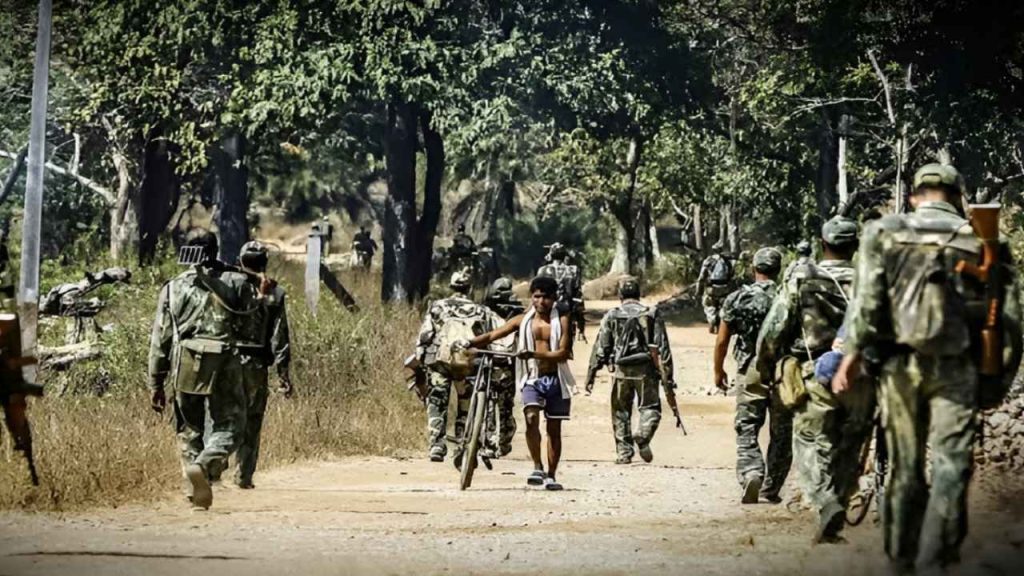Shaheed Saptah (Martyrs’ Week) is a week-long observance that has been taking place for decades, dedicated to honoring fallen Maoist revolutionaries. This period of remembrance, starting from July 28 and running through to August 3, marks the death anniversary of Charu Majumdar, one of the founding ideologues of the Naxalite movement. The observance is most significant in areas like the border regions of Odisha, Telangana, and Jharkhand, where Maoist insurgency has deep roots.

In this article, we’ll dive into the history, significance, and impact of the Shaheed Saptah observance, the current security situation, and how this event continues to shape the socio-political landscape of India. Whether you’re new to the subject or have been following the developments in this region for years, we’ll break everything down in a simple, understandable way with clear, practical insights. By the end of this article, you’ll have a comprehensive understanding of why Shaheed Saptah remains such a prominent event in the Maoist movement.
‘Shaheed Saptah’ Observed by Maoists with Posters in Odisha
| Key Point | Details |
|---|---|
| Event | Shaheed Saptah (Martyrs’ Week) |
| Duration | July 28 – August 3 |
| Commemoration | Marks the death anniversary of Charu Majumdar, a leader of the Naxalite movement. |
| Key Maoist Activity Areas | Border regions of Odisha, Jharkhand, and Telangana. |
| Security Measures | Increased vigilance in Maoist-affected districts, especially in Koraput, Malkangiri, and Nabarangpur. |
| Maoist Strategy | Posters and public calls for resistance, written in Odia and Telugu, urging local support. |
| Heightened Tensions | Due to Maoist activity, counter-insurgency operations are ongoing in neighboring states like Chhattisgarh. |
| Official Reports | Times of India Odisha TV |
Shaheed Saptah remains a significant event in the Maoist insurgency in India, serving as a reminder of the struggles faced by marginalized communities and the continuing influence of Naxalite ideology. While the Indian government has implemented a variety of security measures to counter the threat posed by Maoist insurgents, the observance continues to highlight the deep-rooted socio-economic issues that fuel this conflict. Understanding the implications of Shaheed Saptah not only sheds light on Maoist movements but also underscores the importance of addressing the needs of tribal and rural communities for long-lasting peace.
What is Shaheed Saptah?
Shaheed Saptah, also known as Martyrs’ Week, is a solemn observance held by Maoist groups in honor of those who died in the ongoing fight for the Naxalite cause. These individuals are celebrated as martyrs who gave their lives for the revolutionary ideology that advocates for land redistribution, social justice, and an armed struggle against state oppression.
The Historical Significance of Shaheed Saptah
The event typically marks the death anniversary of Charu Majumdar, who passed away on July 28, 1972. Majumdar was a key leader of the Naxalite movement, and his writings and speeches continue to influence Maoist thought to this day. During this week, Maoists in various parts of India, particularly in the tribal-dominated regions of Odisha, Jharkhand, and Telangana, set up posters and organize rallies, calling upon people to remember the martyrs and renew their commitment to the revolutionary cause.
For the Maoist leaders and followers, this is not just an event; it’s a reminder of their struggle against the Indian state, which they accuse of exploiting the poor, marginalized, and tribal communities. The observance is a call for resistance, a reaffirmation of Maoist ideologies, and a declaration that their fight is far from over.

Why is the Shaheed Saptah Important?
Shaheed Saptah is more than a symbolic observance. It plays a pivotal role in the Maoist movement, especially in maintaining the moral high ground among the affected communities. Here are some key reasons why this week holds great significance:
1. Moral Support for Maoist Leaders and Ideology
For communities living in remote areas, often far from government infrastructure, the Maoist cause has found resonance due to its promises of land rights, social justice, and freedom from exploitation. The Shaheed Saptah helps in reinforcing the legitimacy of their cause and leadership, particularly for those who are marginalized.
2. Public Mobilization and Recruitment
This week also serves as an opportunity for Maoist groups to recruit and mobilize new members. Posters and pamphlets are distributed in high-traffic areas like bus stands, villages, and local markets, urging people to support their fight. The primary goal is to expand their ranks, especially from within tribal and rural communities, by tapping into their grievances over land disputes and economic inequality.
3. Symbolic Defiance Against State Power
For the Maoists, Shaheed Saptah is an assertion of their defiance against state power. The Indian government has spent decades battling insurgency and counter-insurgency operations to dismantle the Maoist network. Despite this, the observance remains an annual event, demonstrating the resilience of the movement in maintaining its identity.
The Current Scenario: Security and Response
The government response to the rising Maoist activities during Shaheed Saptah is a mix of preventive measures and counter-insurgency operations. Over the years, the Indian government has significantly ramped up its security measures in Maoist-affected areas, especially in the border regions of Odisha, Telangana, and Jharkhand. These areas have historically been hotspots for Maoist insurgency, with local populations often caught between government forces and the Maoist rebels.
Key Security Measures During Shaheed Saptah
- Increased Vigilance in Six Districts
- Koraput, Malkangiri, Nabarangpur, Nuapada, Kalahandi, and Rayagada are the six districts in Odisha that see heightened security measures during the week. These districts, located along the Odisha-Telangana-Jharkhand border, have long been Maoist strongholds.
- Heightened Patrols and Vehicle Checks
- Law enforcement agencies implement enhanced patrolling and vehicle checks, particularly around key entry points and highway corridors that run through these sensitive areas. The objective is to prevent Maoists from organizing large gatherings or infiltrating urban areas.
- Combing Operations and Air Surveillance
- Joint combing operations by the Central Reserve Police Force (CRPF) and state police forces are often conducted in the dense forests and mountainous regions where Maoist groups are known to hide. Additionally, air surveillance is used to spot any unusual movement in remote areas.
- Counter-Insurgency Operations in Neighboring States
- Ongoing counter-insurgency operations in neighboring states like Chhattisgarh also impact the security dynamics in Odisha and Telangana. These operations target the leadership of the Maoist groups, attempting to disrupt their operational structure and undermine the movement’s influence.
- Community Outreach and Counter-Narratives
- In some regions, the government is attempting to address the root causes of Maoist insurgency by offering alternative livelihood options to local communities. These initiatives, though not widespread, aim to reduce the appeal of the Maoist message by providing people with economic opportunities outside of insurgency.
The Socio-Political Impact of Shaheed Saptah
While the Maoist movement in India is far from being eradicated, the observance of Shaheed Saptah continues to have a profound impact on Indian politics and society. For one, it highlights the growing discontent among tribal populations, who often feel marginalized and ignored by both state and national governments.
1. Impact on Tribal Communities
Maoist insurgency thrives on the disenfranchisement of tribal populations, who face issues like land alienation, lack of infrastructure, and poor healthcare. During the Shaheed Saptah, Maoist leaders often tap into these grievances, using them as a rallying cry for revolutionary change. The movement also perpetuates a narrative of resistance, encouraging people to take up arms to challenge what they perceive as state oppression.
2. Political Ramifications
Politically, the Maoist insurgency remains a critical issue in the states of Odisha, Telangana, and Jharkhand, where elections often see debates about how to address insurgency, tribal rights, and state control over natural resources. The Shaheed Saptah brings these issues to the forefront, influencing the policy decisions of local governments. The central government is also tasked with balancing security concerns with efforts to improve socio-economic conditions in Maoist-affected regions.
Odisha Congress Unveils ‘Nari Nyay’ to Empower Women and Challenge Government’s ‘Shakti’ Scheme
Odisha Government Enforces New Rule on Outsourcing Appointments, Finance Department Must Approve
Substance Abuse Among Odisha Youths Escalates, De-Addiction Centers Overflowing
FAQs
What is the significance of Shaheed Saptah for the Maoists?
Shaheed Saptah is a week-long observance to honor those who have died fighting for the Maoist cause. It is significant for reaffirming the movement’s ideology and attracting new supporters.
Where is Shaheed Saptah observed?
The observance is most prominent in the border regions of Odisha, Telangana, and Jharkhand, where Maoist insurgency remains active.
How does the Indian government respond to Shaheed Saptah?
The government increases security measures, including patrols, vehicle checks, and counter-insurgency operations in Maoist-affected areas to prevent any large-scale disruptions.
Why do Maoists observe this week?
It is a way for the Maoist groups to honor their fallen comrades and continue their message of resistance against state oppression.





